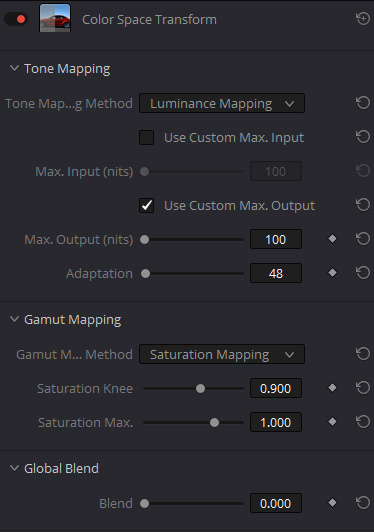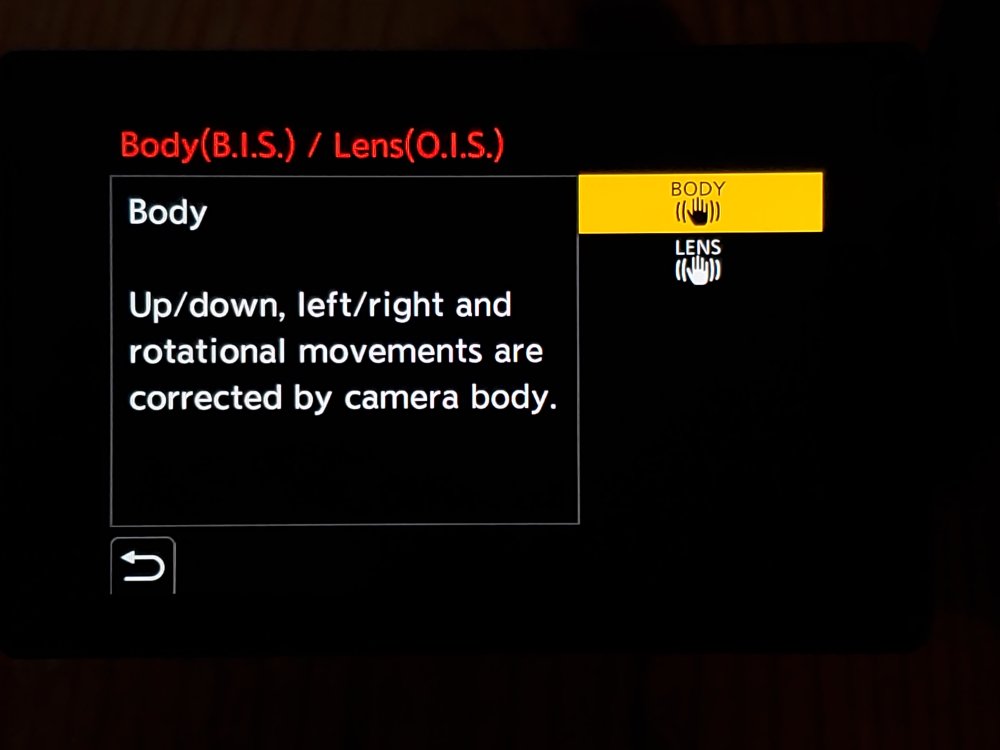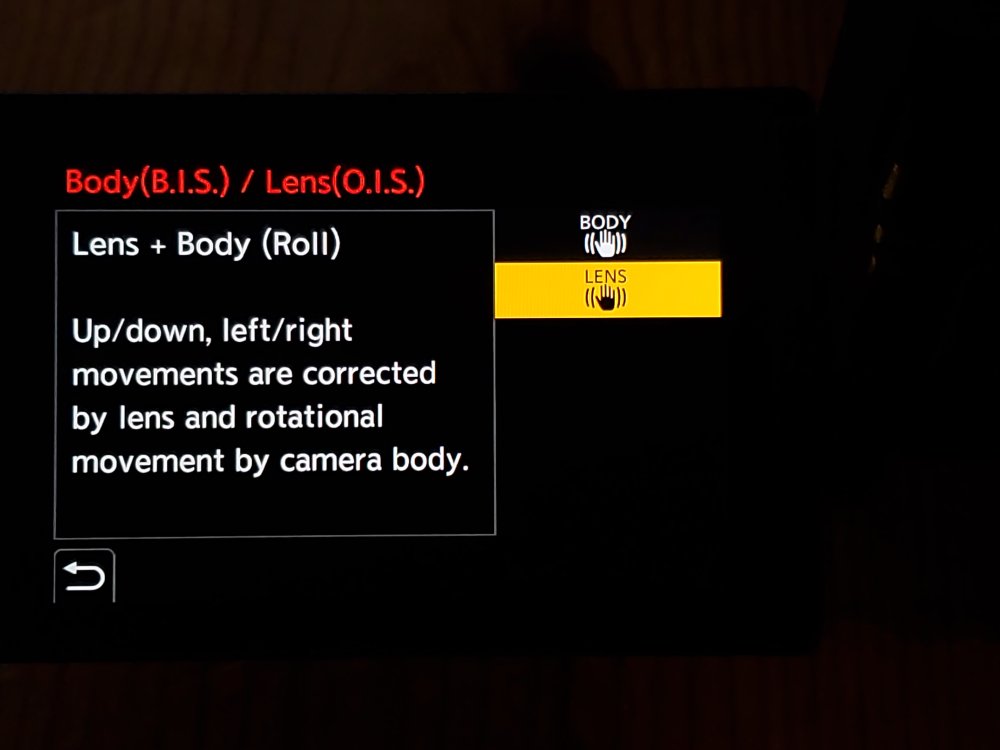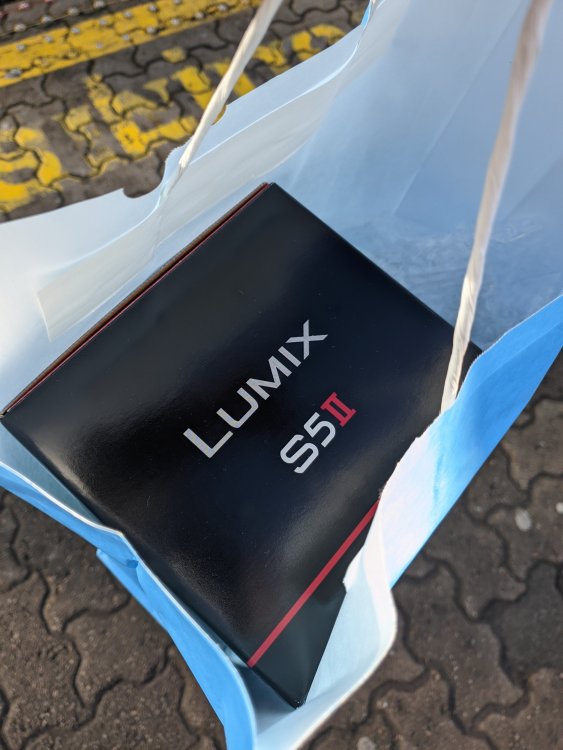-
Posts
970 -
Joined
-
Last visited
Content Type
Profiles
Forums
Articles
Everything posted by hyalinejim
-

Panasonic S5 II (What does Panasonic have up their sleeve?)
hyalinejim replied to newfoundmass's topic in Cameras
OK so I've had a chance to look at the S5II's colour (when converted to from V-gamut to V709) and compare it to the GH6 and to reality. In short, it's a bit different to the GH6, but not as huge a difference than the GH6 was to the GH5, for example. You might get away with using both in a multicam shoot and not matching them, but there are some differences in skin. And both the GH6 and S5II fall quite a bit short of colour as it is in reality, but in different ways. GH6: S5II: Reality: You'll need to open them in separate tabs to see the differences. In relation to @Django 's concern with red in skintones, if you switch between S5II and Reality images you'll notice that the S5II has a range of oranges that are too red and too dark. This doesn't do any favours to people with less than perfect skin like our friend Mister Camera Conspiracies. -

Panasonic S5 II (What does Panasonic have up their sleeve?)
hyalinejim replied to newfoundmass's topic in Cameras
Yeah it's a pity that most of those shots are moving. I'd assume that the RS is the same in 4K full. I'll try to do a 6K versus 4K comparison from a tripod if I get the chance. -

Panasonic S5 II (What does Panasonic have up their sleeve?)
hyalinejim replied to newfoundmass's topic in Cameras
It's actually the quietest of the handful of EF zooms that I own, but from looking at detailed reviews I'd say it's likely that the G2 version of the lens would be a bit quieter. But the G1, although not silent, is not too noisy for me. The G2 AF is also supposed to be considerably faster and more accurate for stills (although I never noticed a problem with the G1), and that might transfer into better phase AF for video, possibly. I really like the image quality of the G1 (very high transmission of light) and would love to own the G2 but I'm not going to spend €1000 for what might be a minor upgrade in AF. I definitely need to replace my noisy first generation Sigma 70-200, though. When I have time I guess I'll pop into my local camera shop (which also carries a range of second hand, older lenses) and try things out and see what works. I guess that the quietest lenses of all would be Canon STM and Nano-USM lenses but there are not so many of these and most are EF-S for crop sensors. -

Panasonic S5 II (What does Panasonic have up their sleeve?)
hyalinejim replied to newfoundmass's topic in Cameras
Skintones are looking good to me using a LUT I made for the GH6: Over the weekend if I have time I'll try to shoot some charts with the GH6 and S5II to check how close or not the colour is. -

Panasonic S5 II (What does Panasonic have up their sleeve?)
hyalinejim replied to newfoundmass's topic in Cameras
Because of the rolling shutter, or because of something else? I assume that RS will be improved in APSC mode, so there is that option if you know there's a train due any minute! I'm just having look at the footage now myself. Today was my first day using the camera properly, did a corporate job with it this morning. All good. Sometimes the AF got confused (you can see this in one of the seal shots I uploaded - Animal AF was on but it just lost it) in which case I just switched it off and used manual. Like, for people when there are 2 or 3 in the frame it sometimes hops back and forth between targets randomly, whereas I would prefer if it waited for me to select who to focus on. I had increased sensitivity to +3 so maybe that has something to do with it. But for standard interview shots it was a relief to just let the camera roll with the lens wide open and I could concentrate on other things besides focusing. One of the questions I was interested in looking at in the test footage I uploaded was: is the 3.1x crop in HD pixel-pixel mode usable? The answer, I think is yes but only by keeping noise low by exposing at base ISO and/or overexposing to keep noise at a minimum and also stopping down to wherever the lens is sharpest. In the clips I uploaded, the first few HD pixel-pixel shots were at 2.8 which is probably too soft. But this was at f8 and around 1.5 stops overexposed at base ISO and I I think I could just aboutt use it in a client vid if I didn't have time to change to a longer lens to get the shot: So that means that a 24-70 roughly becomes a 75-210. But you really need good light to do that to avoid noise and lens imperfections. Would be great for travel in sunny places, not like grey old Ireland! -

Panasonic S5 II (What does Panasonic have up their sleeve?)
hyalinejim replied to newfoundmass's topic in Cameras
To clarify: In Panasonic's LUT, reds and oranges are relatively more saturated than blues and greens even though it's a fairly low saturation conversion in general. The Resolve CST is more saturated than Panasonic's LUT. But the saturation is more balanced across hues, eg; the reds are high saturation but so are the blues and greens. The gamut mapping above helps to bring some of the super-saturated colours into range. But if you prefer a lower overall look then lower the saturation. -

Panasonic S5 II (What does Panasonic have up their sleeve?)
hyalinejim replied to newfoundmass's topic in Cameras
Also try out this modification of the CST, and see what you think. It has the correct middle grey level and tames over-saturation a bit. Tamron EF 24-70 2.8 first edition. Most shots were either f8 or f2.8 -

Panasonic S5 II (What does Panasonic have up their sleeve?)
hyalinejim replied to newfoundmass's topic in Cameras
I'd imagine there's a colour matrix involved in the conversion from RAW to V gamut. That's the variable they'd be tweaking for each sensor, trying to get the results close to whatever the V gamut ideal is. But a matrix is limited in what it can do. As a hypothetical example if you get the hue for blue right then the lightness goes up, or the saturation decreases or another colour goes awry. -

Panasonic S5 II (What does Panasonic have up their sleeve?)
hyalinejim replied to newfoundmass's topic in Cameras
Just be aware that they will make a bit of noise, some more than others. If sound is critical (interview in a quiet room or on-camera mic) then it could be an issue. I can't use my first edition Sigma 70-200 2.8 for interviews as it's too loud. -

Panasonic S5 II (What does Panasonic have up their sleeve?)
hyalinejim replied to newfoundmass's topic in Cameras
@Django and anyone else who's interested I've uploaded a bunch of very short clips here at different resolutions and crop factors to check out: https://drive.google.com/drive/folders/13zSYccjrhj1WXKDNMFioxTAoQbZyuP80?usp=share_link -

Panasonic S5 II (What does Panasonic have up their sleeve?)
hyalinejim replied to newfoundmass's topic in Cameras
Yes, because the colour in V-Log varies so much from camera to camera, ideally Panasonic would create a LUT for each model so that they match. For example, Adobe creates an Adobe Standard RAW profile for each new camera model released to minimise differences between cameras when using their software. -

Panasonic S5 II (What does Panasonic have up their sleeve?)
hyalinejim replied to newfoundmass's topic in Cameras
So no CF Express slot, I guess. -

Panasonic S5 II (What does Panasonic have up their sleeve?)
hyalinejim replied to newfoundmass's topic in Cameras
Yes, but it's very very close to what the APSC crop is anyway. It's probably 95% of the image area of APSC. So 4K APSC has some resizing going on from a slightly bigger area of the sensor than a 1:1 4K crop. -

Panasonic S5 II (What does Panasonic have up their sleeve?)
hyalinejim replied to newfoundmass's topic in Cameras
You can assign a function button (and 14 of the buttons on the body are re-assignable) to "Image Area of Video". This brings up a small overlay with three options: FULL, APSC and Pixel-Pixel. It's quite fast to switch between them. I have this function assigned to the red record button as I use the shutter to start and stop video clips. There is a bit more noise in APSC mode, noticeable even at ISO 4000 (higher dual gain level). But the noise is mainly luma noise and is quite fine and I would say it looks filmic. For those who may be interested if you shoot in HD you can get a crop factor of 3x in pixel-pixel mode for some serious reach. You might even get away with it with a sharp lens at f8 and at base ISO 640 with good exposure. Some graded noise comparisons for reference at ISO 4000 4K FULL: 4K APSC: HD pixel-pixel (not normal HD) -
Yes it looks like GH6 is rated for 7.5 stops and S5II for 6.5, but the S5II has the Active IS technology. Once that hits a M43 body surely it'll be the best yet for stabilisation.
-
Check out Richard Wong's comparison which puts the S5II ahead of the GH6, at least for walking with the camera performance. S5II has dramatically improved IBIS compared to S5, apparently.
-

Panasonic S5 II (What does Panasonic have up their sleeve?)
hyalinejim replied to newfoundmass's topic in Cameras
What are you looking for in terms of specs and content? I don't have anything coming up that I can share but if I can shoot something for you easily I will. -

Panasonic S5 II (What does Panasonic have up their sleeve?)
hyalinejim replied to newfoundmass's topic in Cameras
You can compare the curves here: http://cameramanben.github.io/LUTCalc/LUTCalc/index.html From having a quick look it seems that V-Log curve is most like C-Log 2 and S-Log3. Well, I guess Panasonic never needed more than one log curve. It arose with the Varicam which according to Panasonic has 14+ stops of dynamic range. If everything below that tier has less dynamic range then the V-Log curve is sufficient to contain it all. Maybe it was different for Canon with the C100 (or whatever it was originally) and Canon Log 1 which was probably designed for 11 or 12 stops. -

Panasonic S5 II (What does Panasonic have up their sleeve?)
hyalinejim replied to newfoundmass's topic in Cameras
I think you'll be fine because even with old manual lenses that aren't even recognised by the camera (you enter the focal length when you mount the lens) the IBIS performance seems historically to be as good as with Panny lenses using body only. While it's true that Panasonic only offers one lut for all models, there is only one V-Log curve (except for V-Log L which is the same shape as the regular curve, just truncated at the top) and no matrix options for prosumer models (there are on the Varicam). I hear you that Sony and Canon offer a variety of transformations for different log curves and matrices, but do they offer model-specific transformations? If not, then the situation is effectively the same as for Panasonic, whereby a a transformation is offered for a given gamma and a given gamut, the only difference being there is a single gamma and gamut for V-Log and multiple gammas and gamuts for S and C-Log. This can't account for the differences in colour response between sensors. Maybe Sony and Canon cameras don't vary as much in that regard, who knows? -

Panasonic S5 II (What does Panasonic have up their sleeve?)
hyalinejim replied to newfoundmass's topic in Cameras
I just had a quick look at this and it seems that when using EF lenses with the MC21 you need to turn on the IS switch on the lens in order for IBIS to work. This was a bit strange to me as I'm used to a Metabones Speedbooster where the lens IS switch has to be turned off for IBIS to work. If it's not an IS lens then you don't worry about the switch, lol, because there isn't one. Then there are two options. One is body only and this is the best: The other is a weird mixture of body and lens: This second option is jerky with EF lenses on an MC21 and is in no way comparable to body only. So I don't think there is a way to have both full IBIS in all directions plus whatever the lens can do. But, I think I remember seeing some YT reviews with Panasonic lenses where the reviewer just stuck with body only. So I would say that body only is also good enough for EF lenses. -

Panasonic S5 II (What does Panasonic have up their sleeve?)
hyalinejim replied to newfoundmass's topic in Cameras
I didn't quite say that. I said it had "a half-assed curve", and go on to explain what I mean by that (a mild contrast curve with elevated blacks where middle grey is not at the correct value). It's an easy fix for anyone who knows how to use basic colour correction techniques, which I presume you do. Pannys colour conversion is basically sound, with the caveats that colour is not entirely accurate and that the same conversion is used for different models with different colour responses. But I'm sure that's true for Canon and Sony true. Likewise for the rest of the thread, which is a digression into exposure technique for log in general, not just V-Log. There's nothing particularly difficult about V-Log. I could pick the same or similar nits, I'm sure, for C and S-Log. -

Panasonic S5 II (What does Panasonic have up their sleeve?)
hyalinejim replied to newfoundmass's topic in Cameras
Don't be put off by that! I would assume that the observations I make there regarding V-Log colour are the same for other flavours of log, ie: that different methods of gamut conversions (or non-conversions) will be more or less accurate to objective colour. I don't see how working with V-Log would be more difficult than C or S Log. -

Panasonic S5 II (What does Panasonic have up their sleeve?)
hyalinejim replied to newfoundmass's topic in Cameras
Well, as you can imagine, I spent the afternoon running towards and away from the camera like a fool, trying to figure out if phase AF work for the EF lenses I own (it does). I would guess at this stage that every EF lens will work with the MC21 and, who knows, possibly with other adapters too. But the important variable is how noisy are they going to be. Up to now, I had been using an old Sigma EF 70-200 2.8 as my main interview lens for corporate/promotional vide. The phase AF works very well on the S5II but the noise of the motor is too loud and distracting to be usable for my work. My other workhorse lens, the Tamron EF 24-70 2.8 is not too noisy, and in APSC mode gives me roughly the field of view that I Iike for interviews. The Canon 24-105 is not too noisy, but I don't really like it (low light transmission and weird non-constant aperture behaviour when stopped down). My only other EF AF lens is a nifty 50 which we already knew works fine from Kai or somebody. This was my motivation to get the S5 II. I had noticed that occasionally I missed focus in interviews if the subject moved a little and I felt that wasn't good enough. Now I don't need to hover near the lens quite so much, sweating bricks if the subject leans forward or takes a half step back. The other thing I began to have a look at was if it would change how I shoot B roll. I was fairly happy with how I pull focus manually previously. Nevertheless, I now have the option use human tracking when shooting B roll of people, and normal tracking when shooting objects. I'm also looking forward to putting phase AF through its paces in trying to nab some shallow DOF shots of my kids running around the place. -

Panasonic S5 II (What does Panasonic have up their sleeve?)
hyalinejim replied to newfoundmass's topic in Cameras
I'm just on the way home now and look what I've got in my bag 🙂 For me, the clincher was that phase AF works with my old EF lenses with the MC21 -

How are you converting V-Log to "normal" colour?
hyalinejim replied to hyalinejim's topic in Cameras
That's a very good point. I know from my own experience that V-Log on the GH5 metered -1 stop compared to the regular profiles, in line with what you're saying. On the GH6, however, that behaviour has been fixed and now 0 on the meter in V-Log is the same as in other profiles. I don't know about other Panasonic models or cameras from other manufacturers.






.thumb.jpg.e6eccae40f405770c9929b2f6f03d7db.jpg)

.thumb.jpg.531612b7e295d7e6595a3032d1f5dd33.jpg)


.thumb.jpg.63afe55355f299227e3c3b8b586c8ff3.jpg)
.thumb.jpg.f5b3be629c94da2c565589f3761e8808.jpg)


